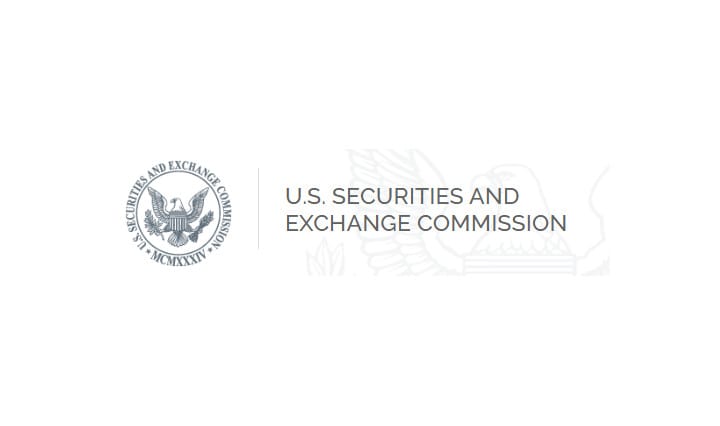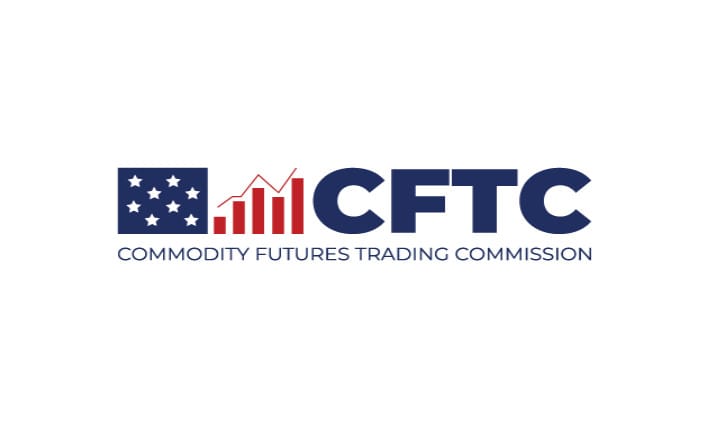Senator Brown, Colleagues Urge Agencies to Complete Adoption of the Basel Capital Standards With Strong Final Rule Consistent With the Proposal. Remember, Fed Governor Bowman and Industry Want to Pump the Brakes & Defang These Reforms.
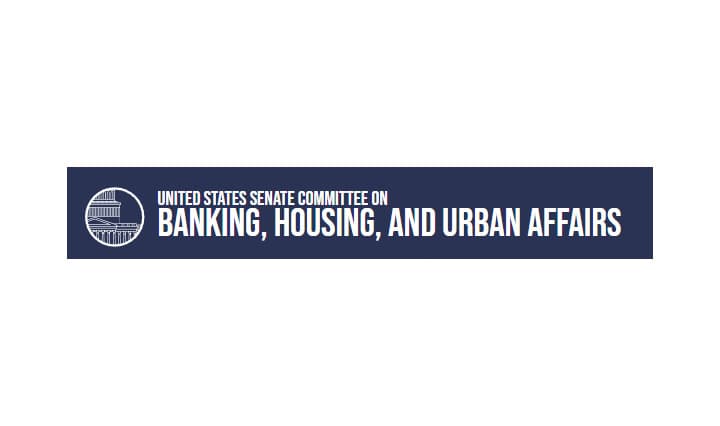
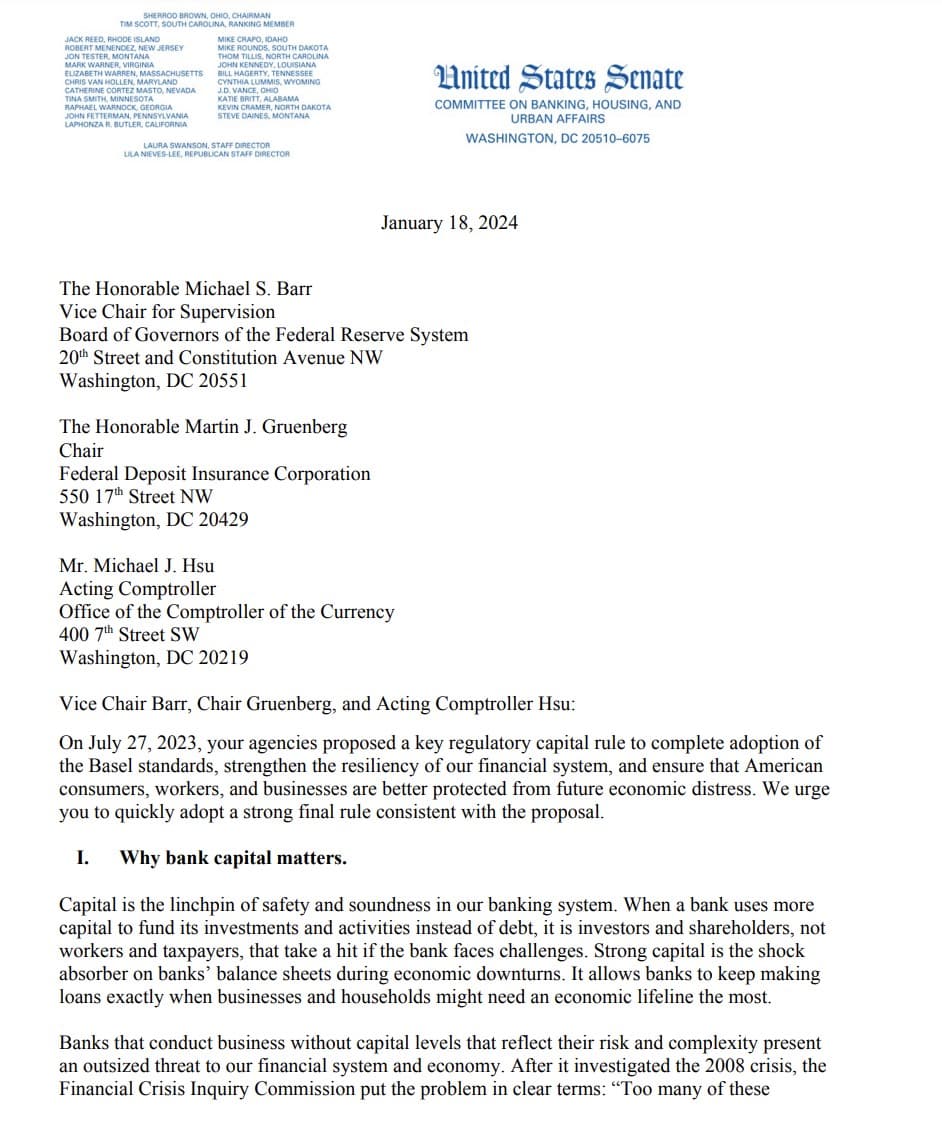

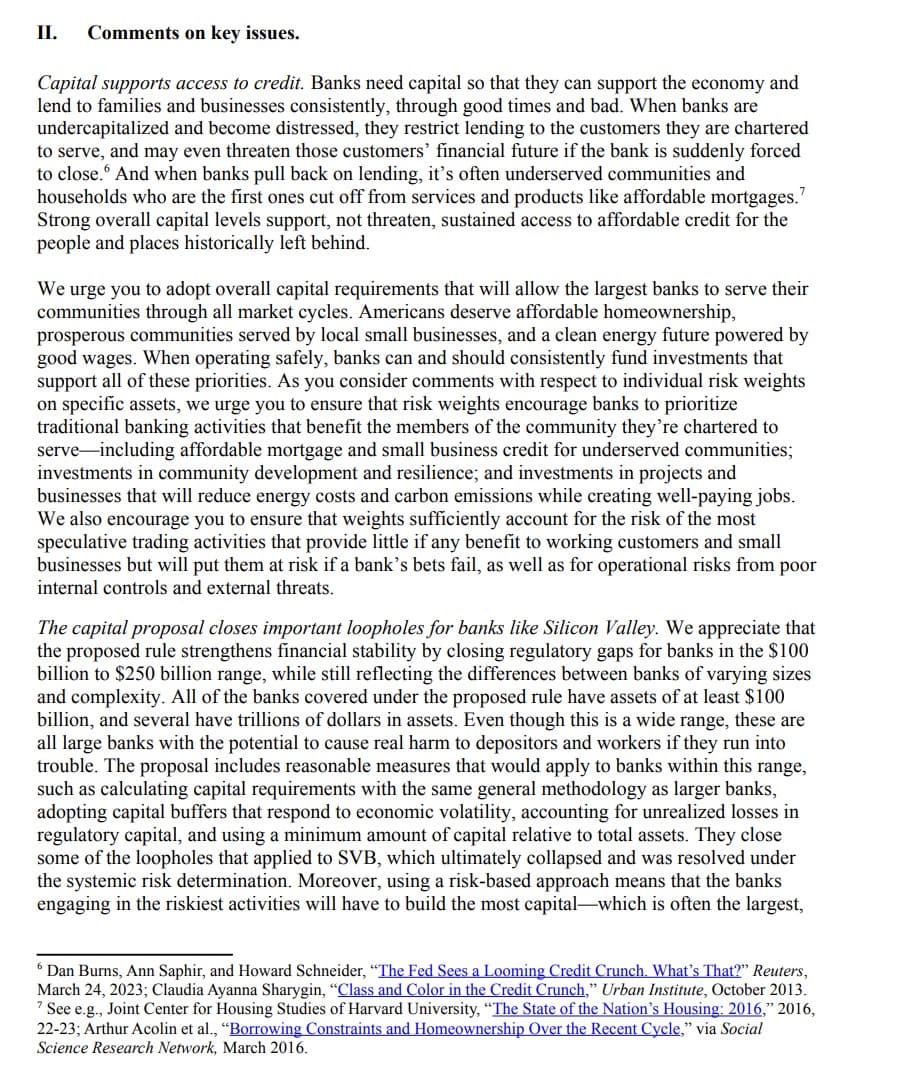
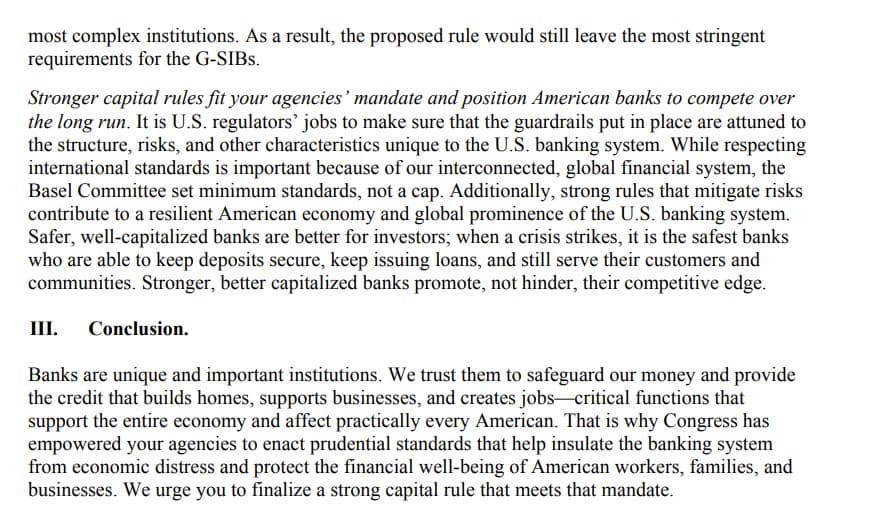
“Capital is the linchpin of safety and soundness in our banking system. When a bank uses more capital to fund its investments and activities instead of debt, it is investors and shareholders, not workers and taxpayers, that take a hit if the bank faces challenges. Strong capital is the shock absorber on banks’ balance sheets during economic downturns. It allows banks to keep making loans exactly when businesses and households might need an economic lifeline the most,”
Vice Chair Barr, Chair Gruenberg, and Acting Comptroller Hsu:
On July 27, 2023, your agencies proposed a key regulatory capital rule to complete adoption of the Basel standards, strengthen the resiliency of our financial system, and ensure that American consumers, workers, and businesses are better protected from future economic distress. We urge you to quickly adopt a strong final rule consistent with the proposal.
I. Why bank capital matters.
Capital is the linchpin of safety and soundness in our banking system. When a bank uses more capital to fund its investments and activities instead of debt, it is investors and shareholders, not workers and taxpayers, that take a hit if the bank faces challenges. Strong capital is the shock absorber on banks’ balance sheets during economic downturns. It allows banks to keep making loans exactly when businesses and households might need an economic lifeline the most.
Banks that conduct business without capital levels that reflect their risk and complexity present an outsized threat to our financial system and economy. After it investigated the 2008 crisis, the Financial Crisis Inquiry Commission put the problem in clear terms: “Too many of these institutions acted recklessly, taking on too much risk, with too little capital.”[1] The consequences of that recklessness was enormous: millions of people lost their jobs,[2] families lost trillions of dollars of wealth in their homes,[3] and many workers still struggled to find work ten years later.[4] Congress and your agencies responded to that catastrophe by requiring higher capital levels so that if banks took such risks again, they—and not the taxpayers—would bear the consequences.
Our banking system has become more resilient since then, but there are still loopholes that need to be closed and rules that must be strengthened to protect against risk to our financial system. We saw earlier this year that when poor risk management and rising interest rates led to accumulating investment losses, Silicon Valley Bank (SVB) needed more capital. SVB’s failed attempt to raise this capital was a key factor in its collapse, which then rippled throughout the economy, spooking depositors at other institutions and jeopardizing the stability of our financial system.[5] When the bank’s $150 billion of uninsured deposits were in limbo, some of those deposits belonged to companies who suddenly did not know if their funds were safe and whether they would be able to pay their employees. Similarly, SVB had developed a track record of financing affordable housing projects in California and Massachusetts that were thrown into uncertainty by its failure. The government ultimately intervened with extraordinary measures to limit the effects of these failures on the real economy, by ensuring that companies could continue paying their employees and that affordable housing projects financed by failed banks would continue to be developed. This unfortunate series of events demonstrated why it is so important to continue to enhance the capital and prudential framework for the largest banks.
The small group of banks that the proposed rule covers are among the largest and most complex financial institutions in the world. Some are behemoths with trillions of dollars in assets. The institutions that would be affected the most focus on sales and trading activity that primarily serve Wall Street and other large institutions. Especially for these large and complex institutions, capital is what keeps risky bets at banks from transforming into layoffs, depleted savings, and fewer wealth-building opportunities for workers, small businesses, and communities. The proposal, when implemented, will increase capital requirements by 19% for the U.S. Global Systemically Important Banks (G-SIBs), which consist of only eight banks. For nearly all other large banks with over $100 billion in assets, capital requirements will increase by 6%. In aggregate, the proposal will increase capital requirements by 16% for all banks with more than $100 billion in assets, thereby impacting fewer than 50 banks that operate in the U.S.
II. Comments on key issues.
Capital supports access to credit. Banks need capital so that they can support the economy and lend to families and businesses consistently, through good times and bad. When banks are undercapitalized and become distressed, they restrict lending to the customers they are chartered to serve, and may even threaten those customers’ financial future if the bank is suddenly forced to close.[6] And when banks pull back on lending, it’s often underserved communities and households who are the first ones cut off from services and products like affordable mortgages.[7] Strong overall capital levels support, not threaten, sustained access to affordable credit for the people and places historically left behind.
We urge you to adopt overall capital requirements that will allow the largest banks to serve their communities through all market cycles. Americans deserve affordable homeownership, prosperous communities served by local small businesses, and a clean energy future powered by good wages. When operating safely, banks can and should consistently fund investments that support all of these priorities. As you consider comments with respect to individual risk weights on specific assets, we urge you to ensure that risk weights encourage banks to prioritize traditional banking activities that benefit the members of the community they’re chartered to serve—including affordable mortgage and small business credit for underserved communities; investments in community development and resilience; and investments in projects and businesses that will reduce energy costs and carbon emissions while creating well-paying jobs. We also encourage you to ensure that weights sufficiently account for the risk of the most speculative trading activities that provide little if any benefit to working customers and small businesses but will put them at risk if a bank’s bets fail, as well as for operational risks from poor internal controls and external threats.
The capital proposal closes important loopholes for banks like Silicon Valley. We appreciate that the proposed rule strengthens financial stability by closing regulatory gaps for banks in the $100 billion to $250 billion range, while still reflecting the differences between banks of varying sizes and complexity. All of the banks covered under the proposed rule have assets of at least $100 billion, and several have trillions of dollars in assets. Even though this is a wide range, these are all large banks with the potential to cause real harm to depositors and workers if they run into trouble. The proposal includes reasonable measures that would apply to banks within this range, such as calculating capital requirements with the same general methodology as larger banks, adopting capital buffers that respond to economic volatility, accounting for unrealized losses in regulatory capital, and using a minimum amount of capital relative to total assets. They close some of the loopholes that applied to SVB, which ultimately collapsed and was resolved under the systemic risk determination. Moreover, using a risk-based approach means that the banks engaging in the riskiest activities will have to build the most capital—which is often the largest, most complex institutions. As a result, the proposed rule would still leave the most stringent requirements for the G-SIBs.
Stronger capital rules fit your agencies’ mandate and position American banks to compete over the long run. It is U.S. regulators’ jobs to make sure that the guardrails put in place are attuned to the structure, risks, and other characteristics unique to the U.S. banking system. While respecting international standards is important because of our interconnected, global financial system, the Basel Committee set minimum standards, not a cap. Additionally, strong rules that mitigate risks contribute to a resilient American economy and global prominence of the U.S. banking system. Safer, well-capitalized banks are better for investors; when a crisis strikes, it is the safest banks who are able to keep deposits secure, keep issuing loans, and still serve their customers and communities. Stronger, better capitalized banks promote, not hinder, their competitive edge.
III. Conclusion.
Banks are unique and important institutions. We trust them to safeguard our money and provide the credit that builds homes, supports businesses, and creates jobs—critical functions that support the entire economy and affect practically every American. That is why Congress has empowered your agencies to enact prudential standards that help insulate the banking system from economic distress and protect the financial well-being of American workers, families, and businesses. We urge you to finalize a strong capital rule that meets that mandate.
“Banks that conduct business without capital levels that reflect their risk and complexity present an outsized threat to our financial system and economy.”
Fed Governor Michelle W. Bowman is skeptical these reforms in speech at Protect Main Street sponsored by the Center for Capital Markets at the U.S. Chamber of Commerce, Washington, D.C. The Path Forward for Bank Capital Reform

In a nutshell, the rulemaking proposal incorporates Basel capital requirements to all banks with over $100 billion in assets, regardless of their international activities. The proposal would substantially increase regulatory capital buffer and minimum capital requirements for the covered firms.
Bowman begins to throw cold water on Basel III "endgame" capital reforms, seemingly falling in line with industry (as we will see next):
From my perspective, given the significant response from a number of industries and perspectives, as a bank regulatory policymaker, the agencies are obligated to think carefully about the best path forward for this proposal.
Today, I'd like to briefly discuss what I see as the consequences of miscalibration of capital reforms—and testing the "more is better" principle—through a discussion of the impacts of finalizing the proposed capital reforms without significant revisions. I will then outline ideas for a path forward and highlight what I see as the two most pressing problems in the proposal, issues that we must address before finalizing these and other pending rules. And finally, at the risk of lulling those to sleep who do not eat, drink, and breathe bank capital rules 24/7, I will identify a few important technical issues for resolution because they lead into the two overarching problems that I referenced a moment ago.
When policymakers consider changes to the capital framework, particularly increases of the magnitude contemplated in the proposal, we must carefully weigh the benefit of increased safety from higher capital levels, with the direct costs to banks, and the downstream effects on consumers, businesses, and the broader economy.

I am cautiously optimistic that policymakers can work toward a reasonable compromise, one that addresses two of the most critical shortcomings of the proposal: over-calibration and the lack of regulatory tailoring.
The costs of this proposal, if implemented in its current form, would be substantial. As the proposal describes, Federal Reserve staff estimates these changes to result in an aggregate 20 percent increase in total risk-weighted assets across bank holding companies subject to the rule, although some commenters have projected much greater effects on some firms. While the actual impact on binding capital requirements will vary by firm, it is apparent even with the incomplete information available today that this will represent a large increase in capital requirements.
Bowman definitely wants to ease Basel requirements it seems:
To address this issue of calibration, policymakers must develop and work toward a target, a top-line aggregate capital level that would best promote safety and soundness and one that has a broad consensus among policymakers. Earlier efforts on the Basel proposal would have resulted in something closer to "capital neutrality"—with essentially minimal top-line change in aggregate capital requirements across the U.S. banking system. I would note that the U.K. approach contemplates an average increase in the low single digits.
Bowman also seems to be against tailoring the Basel requirements so that they are uniform across all banks. Tailoring sees that firms are divided into four categories based on size and complexity, with the largest and most complex firms subject to the most stringent requirements. Regional banks, with $10 billion to $100 billion in assets, are subject to a somewhat more streamlined capital framework, with the simplest rules for community banks that rely on a less complex, relationship-based business model.
Despite the past success in this approach, tailoring has recently come under attack in regulatory reform efforts and applications Some have argued that the bank stress last spring was the result of changes Congress made several years ago to promote risk-based and tailored supervision. The theory is that following the implementation of tailoring rules, regulators adopted a less assertive supervisory approach, and that regulators should instead move toward a regime that imposes uniform standards to firms with significant variability in size, risk, complexity, and business model—shifting back to a one-size-fits-all regulatory approach.
I have still not seen compelling evidence that removing tailoring is a productive regulatory approach. To the contrary, the existing capital framework demonstrates how the tailored approach can help support appropriate requirements based on firm characteristics.
In my mind, the failure to apply tailoring is a fundamental flaw of the Basel capital reforms as proposed, and one that must be addressed.
"From my perspective, given the significant response from a number of industries and perspectives, as a bank regulatory policymaker, the agencies are obligated to think carefully about the best path forward for this proposal"
Industry HATES it as well–Joint BPI, ABA Comment Letter: Basel Proposal’s Costs to U.S. Economy Outweigh Any Benefits
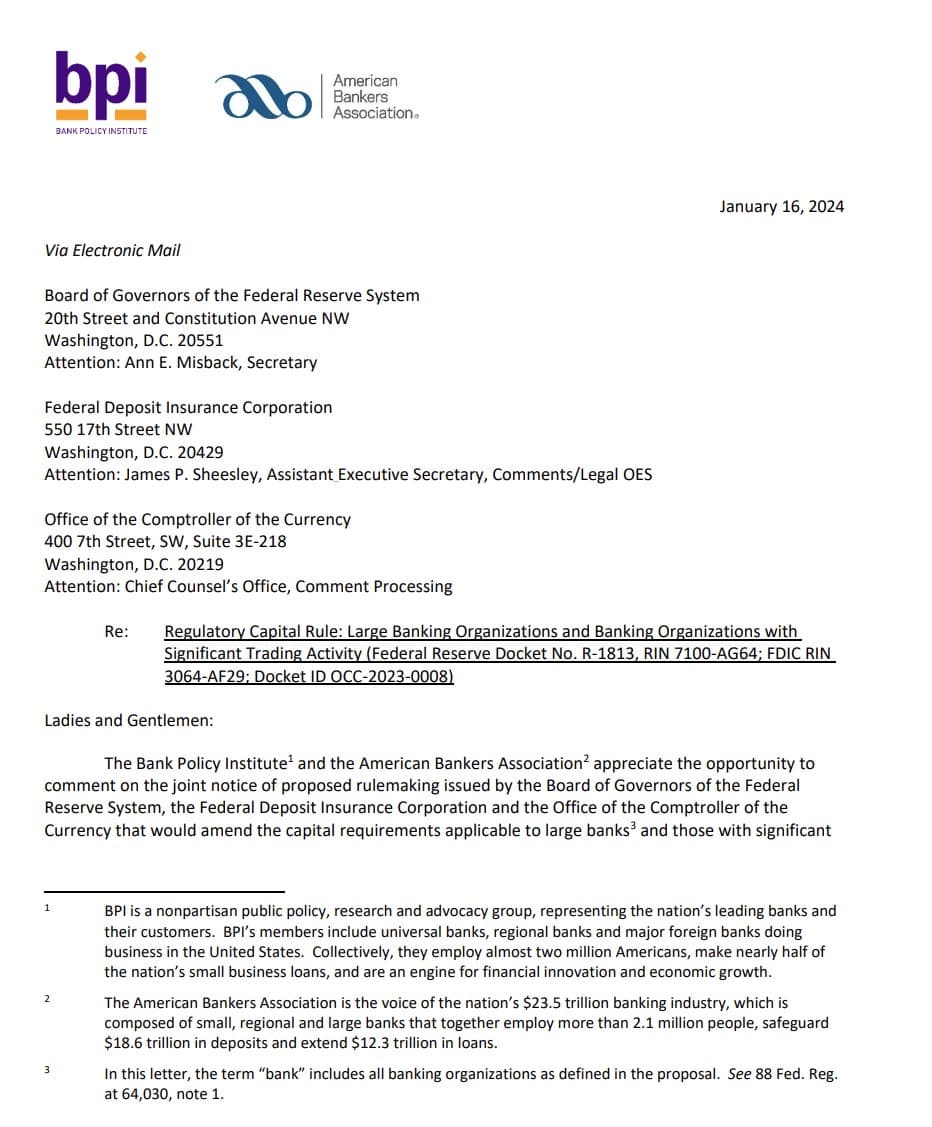
The banking agencies’ Basel capital proposal would impose significant, unjustified and permanent costs on U.S. businesses and consumers and provides no evidence banks hold insufficient capital against the four risks addressed in the proposal.
The Basel capital proposal would impose significant costs on the U.S. economy, ranging from small business loans to the pricing of derivatives that allow businesses to hedge their risks. The agencies dramatically underestimate these consequences in their proposal and fail to weigh the costs and benefits of their changes. The result is a policy proposal that reduces the availability of credit for main street American businesses, weakens economic growth, punishes diversified banking business models and pushes financing to less stable nonbank intermediaries. Rather than bolstering banks, this proposal makes them less able to do their basic jobs as economic engines and financial intermediaries: pricing loans, extending credit and providing liquidity to financial markets.
“This proposal’s profound consequences for the U.S. economy strike a sharp contrast with the agencies’ inadequate consideration of costs and benefits. On a micro level, the proposal would make small business owners pay more for financing, deprive lower-income customers of vital sources of backup credit and preclude hardworking Americans from buying their first home without a large down payment. On a macro level, the proposed capital charges would permanently cut American economic output and endanger market liquidity. Policymakers should re-propose the rule and consider the costs thoroughly.” – BPI President and CEO Greg Baer
According to BPI and ABA, the problems with the proposal are pervasive and insurmountable without a complete re-proposal.
The grievances with the proposed rules they have include:
- An operational risk charge that would impose a tax on all banking activities, at a level that massively overstates banks’ actual operational risk and fails to acknowledge that U.S. banks are already required to capitalize for operational risk through the stress tests.
- Unnecessarily high credit risk weights on mortgage loans, retail loans and small business loans that are unsupported by empirical analysis. Several changes to the credit risk framework would have particularly harmful consequences for smaller firms and lower-income households.
- Restricting the potential for loans to low-risk firms without publicly listed securities to qualify for lower capital requirements.
- Introducing a capital charge on the unused portion of credit card lines that would reduce the availability of such credit, hurting financially fragile customers who rely on credit cards to meet urgent needs.
- Increasing risk weights for mortgages with lower down payments – which disproportionately affect Black and Hispanic borrowers and first-time homebuyers.
- An outsized increase in market risk capital and failure to recognize the substantial overlap between the stress tests and the new framework for market risk. They both assess market risk under extreme stress conditions and over a prolonged period of illiquidity, during which banks are assumed to be unable to hedge or close out positions.
- A backdoor repeal of many of the capital tailoring provisions of the bipartisan Economic Growth, Regulatory Relief and Consumer Protection Act of 2018, which would impose undue costs and burdens on regional banks without a commensurate supervisory or policy benefit.
Legal flaws: "The agencies failed to adhere to the Administrative Procedure Act, which sets out requirements for all federal agency rulemaking. The proposed rule’s numerous legal weaknesses include a lack of justification and explanation, reliance on non-public analysis and a failure to fully consider the costs and benefits of the proposal. These deficiencies and others demand a full re-proposal of the rule."
“Despite the old saying, more isn’t always better. These proposed capital increases would dolittle to increase the safety and soundness of our banking system, which regulators and stress tests have confirmed is strong and already well-capitalized. Instead, at a critical moment for our economy, these changes would inflict serious harm on consumers and businesses in every community. First-time mortgage borrowers, farmers, renewable energy companies, retirees and others would see their access to credit shrink and their costs increase under this proposal. Incredibly, regulators have not even attempted to offer a thorough economic analysis of the proposal’s full costs. They have simply failed to make the case and must go back to the drawing board.” – ABA President and CEO Rob Nichols
Yeesh, it really seems industry is up in arms over these proposed capital rules, I wonder why?...

TLDRS:
- U.S. Senator Sherrod Brown, along with several other Senators, expressed their endorsement for new capital requirements suggested by the Federal Reserve, FDIC, and OCC.
- The letter highlighted that adequate capital acts as a safeguard in the banking system, ensuring that it's the investors and shareholders, rather than workers and taxpayers, who bear the brunt during economic downturns, thereby allowing banks to continue providing essential services like loans during crucial times.
- They stressed the risks posed by banks operating without sufficient capital to absorb shocks, underscoring that such undercapitalized institutions pose a significant threat to the stability of the financial system and the broader economy.
- As covered above, Fed Governor Bowman and Industry would like to see these rules defanged.

